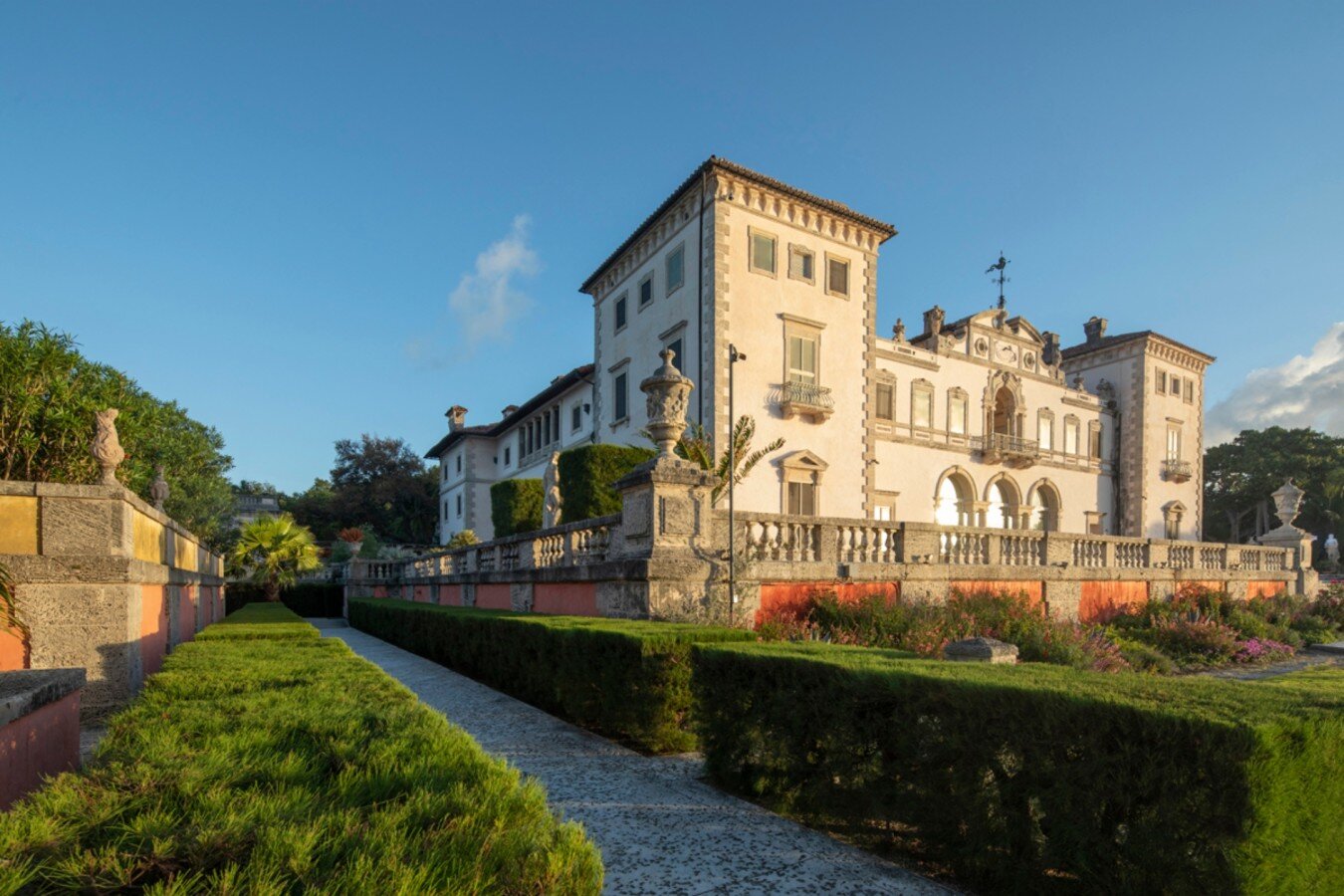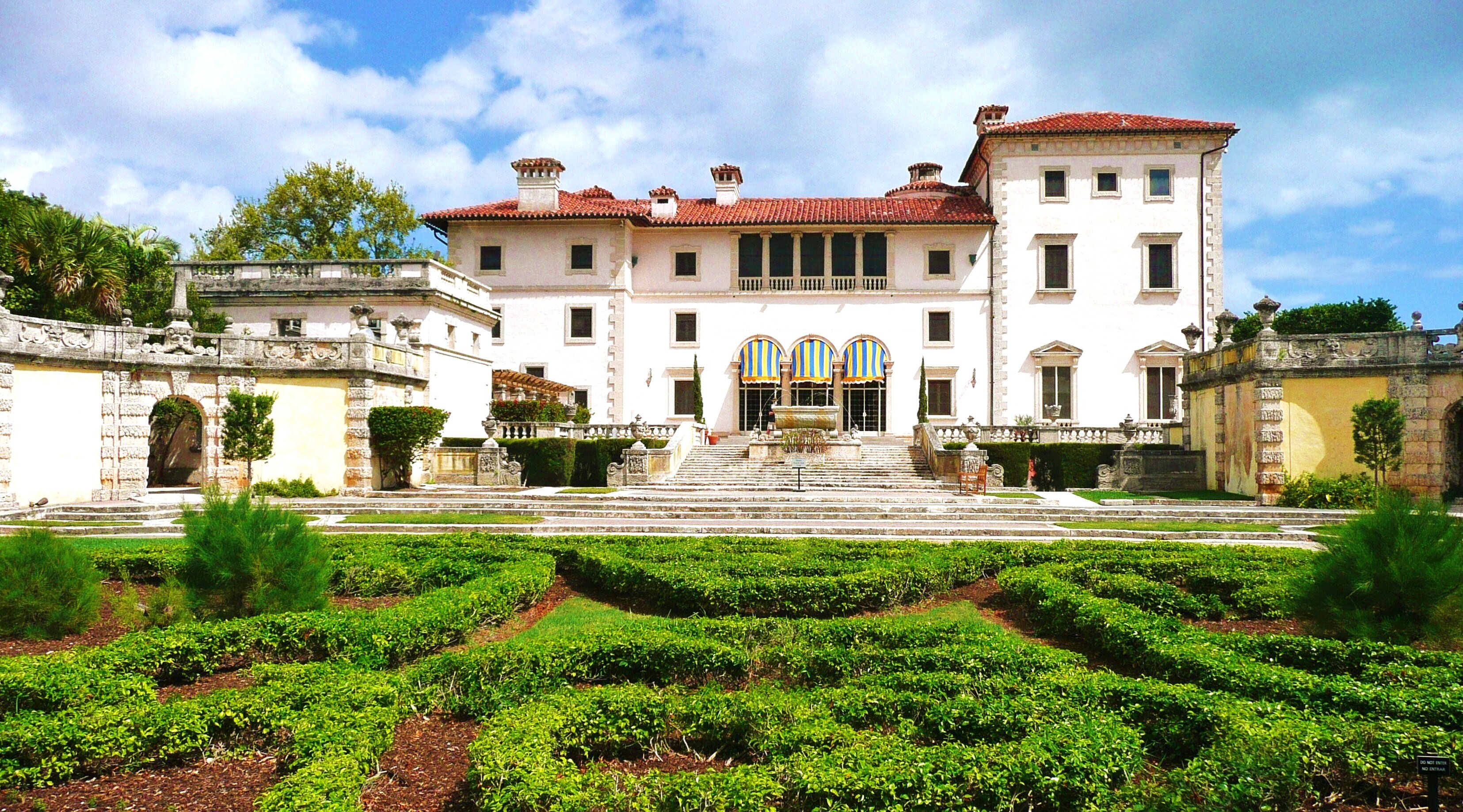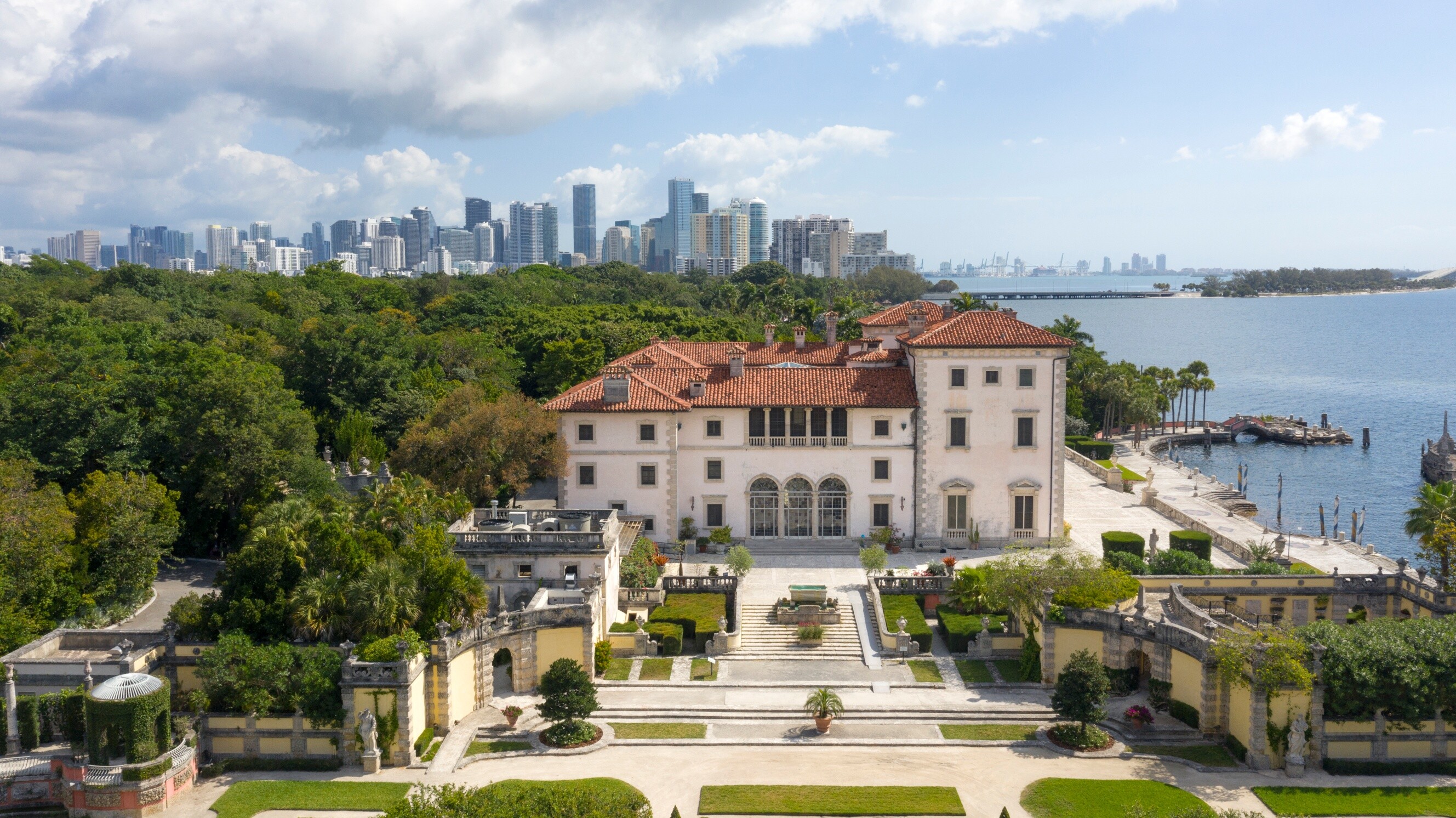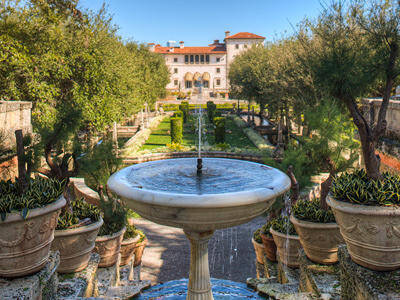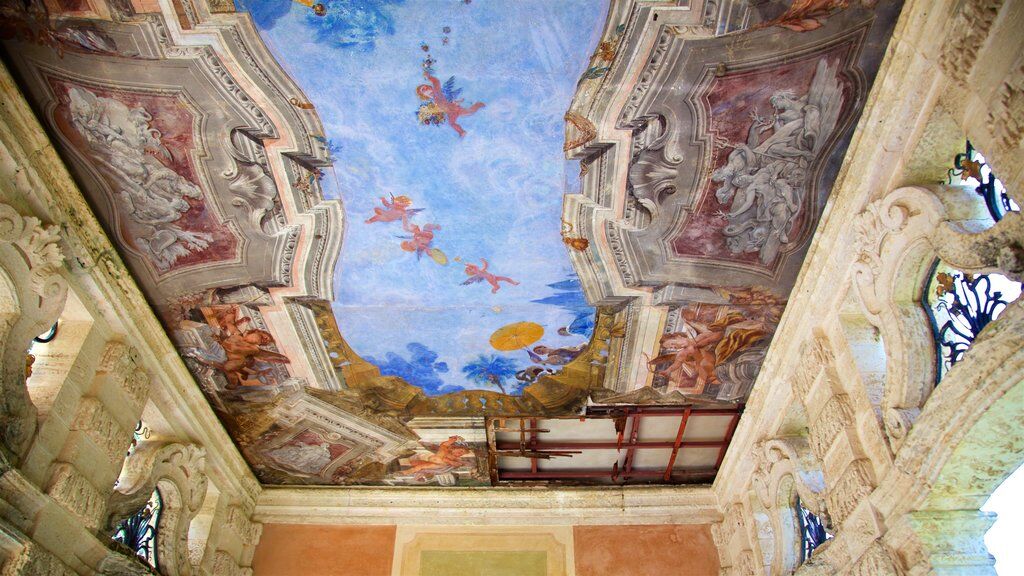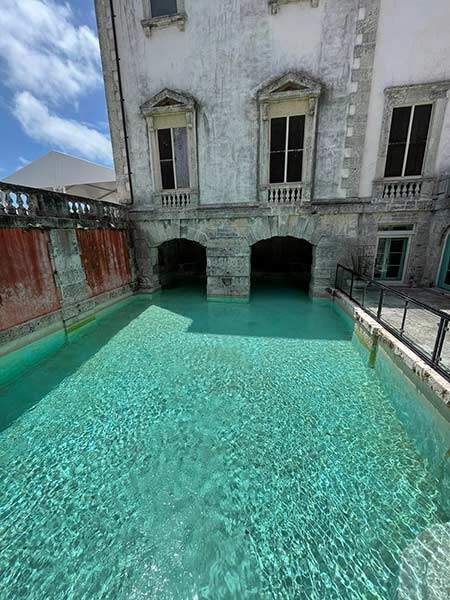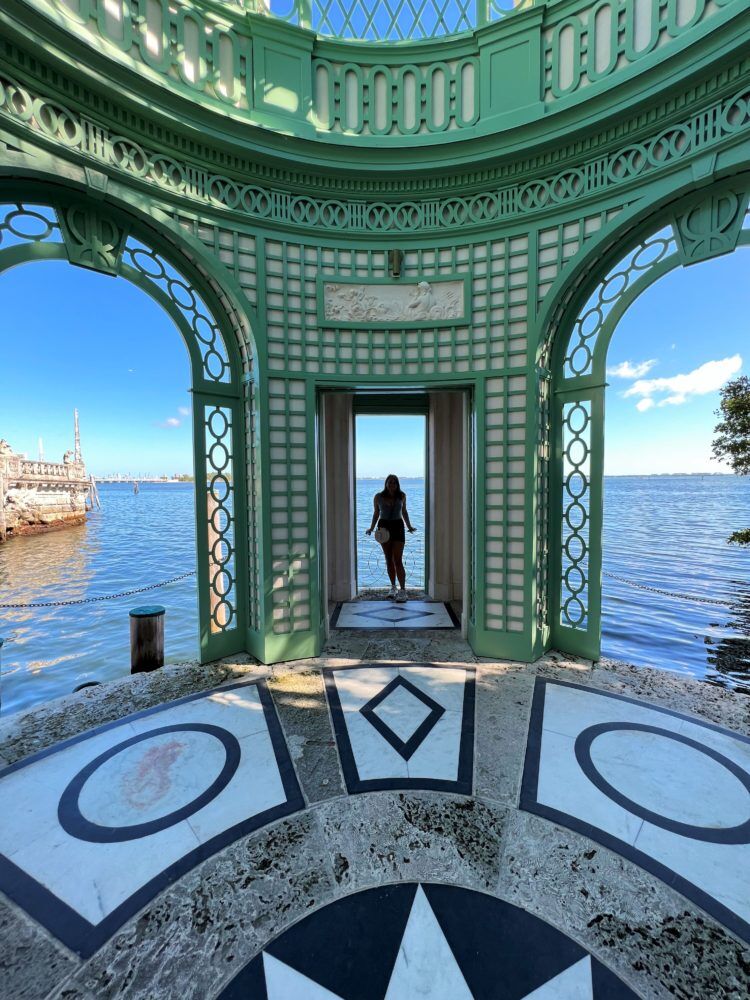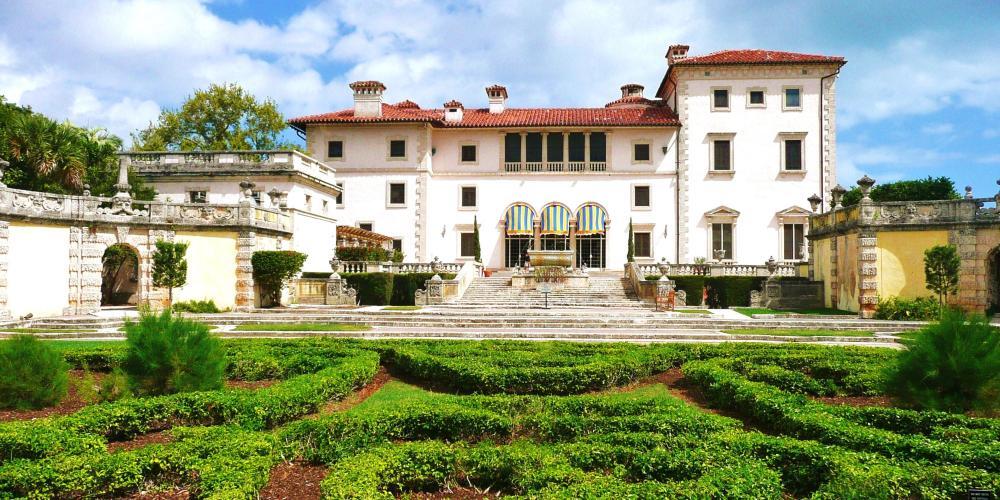
Historical Vizcaya Museum
and Garden in Miami, Florida
About the Musuem and Garden
The Vizcaya Museum and Gardens, previously known as Villa Vizcaya, was the estate of businessman Mr. James Deering, of the Deering McCormick-International Harvester fortune, on Biscayne Bay in the present-day Coconut Grove neighborhood of Miami, Florida.
This villa or estate, which dates back to the early 20th century, also has an extensive Italian Renaissance garden, a native woodland landscape, as well as an historic compound of village outbuildings.
The landscape and architecture were inspired by Veneto, Tuscan Italian Renaissance model and were designed in the Mediterranean Revival architecture style with Baroque elements. F. F.
Origin
The northern Spanish province is the reason for the estate’s name Biscay ( Vizcaya (in the Basque Region along the east Atlantic’s Bay of Biscay Because the estate is located on the west Atlantic’s shore, Biscayne Bay . According to records, Deering wanted the name to be remembered for Vizcaya, an early Spaniard who had thought he had explored the area. However, he later was corrected and told that Vizcaya’s name was Sebastian Vizcaino . Deering was used Caravel A type of ship style that was used during the Age of Exploration As the emblem and symbol of Vizcaya,. At the property’s entrance, a representation of Bel Vizcaya, the mythical explorer, greets visitors.
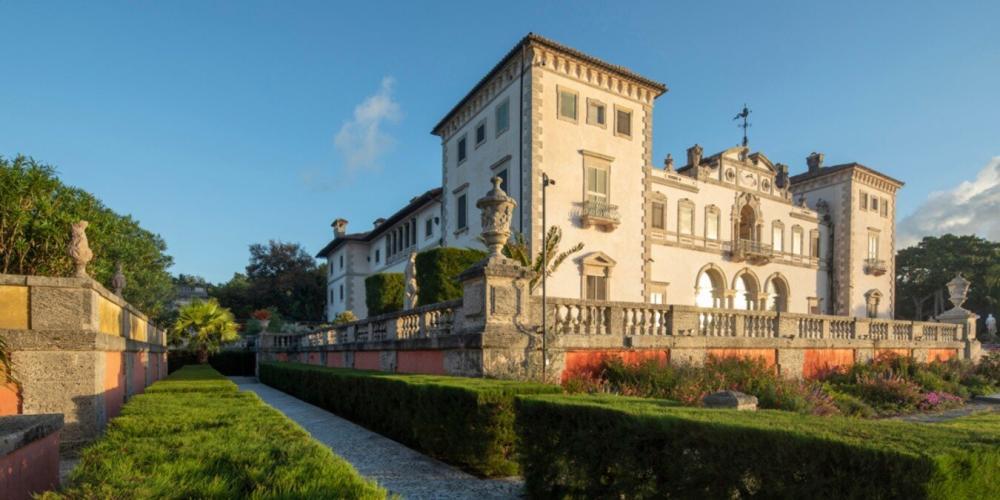


Yester-DAY
Original estate property consisted of 180 acres (73ha) of shoreline swamps, dense inland native tropical forests, and 180 acres (73 ha). Deering, a conservationist positioned the estate section along the shoreline to preserve the forests. The villa, formal gardens, recreational facilities, extensive lagoon garden with new islands, potager, grazing fields and a village service compound were to be included in this portion. Deering started construction on Vizcaya on December 12, 1912. He officially took possession of the property when he arrived aboard Nepenthe, his yacht.
The villa was constructed between 1914 and 1922 at a cost, while construction of the elaborate Italian Renaissance village and extensive Italian Renaissance garden continued into 1923. From 1916 to 1925, Deering lived in Vizcaya for his winter home. Building trades and supplies in Florida were hard to find during World War I.
Vizcaya is notable for adapting historic European aesthetic traditions to South Florida’s subtropical environment. It combined elements from France and Italy with Floridian coral architectural trim. The garden was then planted with native and sub-tropical plants that could thrive in the climate and habitat. Palms, Philodendrons were not represented in the emulated garden of Tuscany and Ile-de-France.
Elsie de Wolfe, an interior decorator, introduced Deering[11] to Paul Chalfin. Chalfin was a former artist curator, painter and interior designer who became the project’s manager. Chalfin recommended F. Burrall Hoffman[13] was commissioned to design the villa’s structure and facade, as well as the garden pavilions and outbuildings.
Deering and Chalfin met Diego Suarez in 1914 while visiting Villa La Pietra, Florence. [15] Suarez was the designer of the landscape masterplan and individual gardens.
Vizcaya’s exterior and garden architecture are a combination of various Italian Renaissance villas, as well as French Renaissance parterre features.



Vizcaya Museum also has Gilded Age technology. Old doorbells, a dumbwaiter and a rotary dial telephone are all on display. Vizcaya’s telephone system is the first in Miami Dade County.
Deering was killed on September 25, 1925 aboard the steamship . He was returning to the United States via the City of Paris. His two nieces, Marion Deering McCormick (wife of Chauncey McCormick) and Barbara Deering Danielson (wife of Richard Ely Danielson), inherited Vizcaya after his death. After hurricanes and rising maintenance costs, they sold the estate’s surrounding land parcels over the years. They sold large portions of Vizcaya’s property to the Catholic Diocese in St. Augustine, Florida to build Miami’s Mercy Hospital. 50 acres (200,000m2) comprised the main house, formal gardens and village.
The villa and formal Italian gardens were purchased by Miami-Dade County in 1952 for $1 million. Deering’s heirs donated the villa’s furnishings and antiquities to the County-Museum.[16][23] Vizcaya began operation in 1953 as the Dade County Art Museum. In the middle of the 1950s, the county acquired the village and the remaining property. The county acquired the village and remaining property in the mid-1950s.
The Miami Science Museum, and the Space Transit Planetarium were built in 1960 on Vizcaya, just across the main building.
Films
Many films have been shot in Vizcaya, both credit and uncredit. Deering enjoyed silent films in Vizcaya’s courtyard and was particularly interested in the works Charlie Chaplin. You can see Vizcaya’s exterior photos in the films Tony Rome and Ace Ventura. [39] Any Given Sunday. [40] Bad Boys II. Daring Game.] Iron Man 3. The music video of The Cover Girls’ 1988 song, “Promise Me” was shot at Vizcaya. Vizcaya was used often as the location for South Florida’s wedding reality show Four Weddings. Days of Our Lives, a daytime soap opera that focuses on the lives of ordinary people, had scenes shot at Vizcaya.
The estate can be clearly seen in the background of several photographs taken by Bunny Yeager from model Bettie Page in their 1950s working relationship.
Vizcaya is a popular spot for weddings and special events due to its architectural and natural beauty. Because of its natural beauty and architectural architecture, Vizcaya is an ideal location for weddings and other special events.
The AIA Florida Chapter added Vizcaya to its list of Florida Architecture: 100 years on April 18, 2012. 100 Places.



Historical Vizcaya Museum
and Garden in Miami, Florida
About the Musuem and Garden
The Vizcaya Museum and Gardens, previously known as Villa Vizcaya, was the estate of businessman Mr. James Deering, of the Deering McCormick-International Harvester fortune, on Biscayne Bay in the present-day Coconut Grove neighborhood of Miami, Florida.
This villa or estate, which dates back to the early 20th century, also has an extensive Italian Renaissance garden, a native woodland landscape, as well as an historic compound of village outbuildings.
The landscape and architecture were inspired by Veneto, Tuscan Italian Renaissance model and were designed in the Mediterranean Revival architecture style with Baroque elements. F. F.
Origin
The northern Spanish province is the reason for the estate’s name Biscay ( Vizcaya (in the Basque Region along the east Atlantic’s Bay of Biscay Because the estate is located on the west Atlantic’s shore, Biscayne Bay . According to records, Deering wanted the name to be remembered for Vizcaya, an early Spaniard who had thought he had explored the area. However, he later was corrected and told that Vizcaya’s name was Sebastian Vizcaino . Deering was used Caravel A type of ship style that was used during the Age of Exploration As the emblem and symbol of Vizcaya,. At the property’s entrance, a representation of Bel Vizcaya, the mythical explorer, greets visitors.



Yester-DAY
Original estate property consisted of 180 acres (73ha) of shoreline swamps, dense inland native tropical forests, and 180 acres (73 ha). Deering, a conservationist positioned the estate section along the shoreline to preserve the forests. The villa, formal gardens, recreational facilities, extensive lagoon garden with new islands, potager, grazing fields and a village service compound were to be included in this portion. Deering started construction on Vizcaya on December 12, 1912. He officially took possession of the property when he arrived aboard Nepenthe, his yacht.
The villa was constructed between 1914 and 1922 at a cost, while construction of the elaborate Italian Renaissance village and extensive Italian Renaissance garden continued into 1923. From 1916 to 1925, Deering lived in Vizcaya for his winter home. Building trades and supplies in Florida were hard to find during World War I.
Vizcaya is notable for adapting historic European aesthetic traditions to South Florida’s subtropical environment. It combined elements from France and Italy with Floridian coral architectural trim. The garden was then planted with native and sub-tropical plants that could thrive in the climate and habitat. Palms, Philodendrons were not represented in the emulated garden of Tuscany and Ile-de-France.
Elsie de Wolfe, an interior decorator, introduced Deering[11] to Paul Chalfin. Chalfin was a former artist curator, painter and interior designer who became the project’s manager. Chalfin recommended F. Burrall Hoffman[13] was commissioned to design the villa’s structure and facade, as well as the garden pavilions and outbuildings.
Deering and Chalfin met Diego Suarez in 1914 while visiting Villa La Pietra, Florence. [15] Suarez was the designer of the landscape masterplan and individual gardens.
Vizcaya’s exterior and garden architecture are a combination of various Italian Renaissance villas, as well as French Renaissance parterre features.



Vizcaya Museum also has Gilded Age technology. Old doorbells, a dumbwaiter and a rotary dial telephone are all on display. Vizcaya’s telephone system is the first in Miami Dade County.
Deering was killed on September 25, 1925 aboard the steamship . He was returning to the United States via the City of Paris. His two nieces, Marion Deering McCormick (wife of Chauncey McCormick) and Barbara Deering Danielson (wife of Richard Ely Danielson), inherited Vizcaya after his death. After hurricanes and rising maintenance costs, they sold the estate’s surrounding land parcels over the years. They sold large portions of Vizcaya’s property to the Catholic Diocese in St. Augustine, Florida to build Miami’s Mercy Hospital. 50 acres (200,000m2) comprised the main house, formal gardens and village.
The villa and formal Italian gardens were purchased by Miami-Dade County in 1952 for $1 million. Deering’s heirs donated the villa’s furnishings and antiquities to the County-Museum.[16][23] Vizcaya began operation in 1953 as the Dade County Art Museum. In the middle of the 1950s, the county acquired the village and the remaining property. The county acquired the village and remaining property in the mid-1950s.
The Miami Science Museum, and the Space Transit Planetarium were built in 1960 on Vizcaya, just across the main building.
Films
Many films have been shot in Vizcaya, both credit and uncredit. Deering enjoyed silent films in Vizcaya’s courtyard and was particularly interested in the works Charlie Chaplin. You can see Vizcaya’s exterior photos in the films Tony Rome and Ace Ventura. [39] Any Given Sunday. [40] Bad Boys II. Daring Game.] Iron Man 3. The music video of The Cover Girls’ 1988 song, “Promise Me” was shot at Vizcaya. Vizcaya was used often as the location for South Florida’s wedding reality show Four Weddings. Days of Our Lives, a daytime soap opera that focuses on the lives of ordinary people, had scenes shot at Vizcaya.
The estate can be clearly seen in the background of several photographs taken by Bunny Yeager from model Bettie Page in their 1950s working relationship.
Vizcaya is a popular spot for weddings and special events due to its architectural and natural beauty. Because of its natural beauty and architectural architecture, Vizcaya is an ideal location for weddings and other special events.
The AIA Florida Chapter added Vizcaya to its list of Florida Architecture: 100 years on April 18, 2012. 100 Places.



